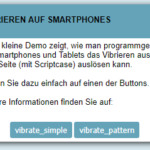

In other words, you do not lose any earned research rewards if you do not stake a block within 180 days and keep your beacon up-to-date. This means that while your beacon might expire after 180 days, your earned research rewards will be retained and can be claimed by advertising a beacon with the same CPID and going through the validation process again. Note, however, that the 180 day expiration on research rewards has been removed with the Fern update. Once a beacon has been validated and is a v11 protocol beacon, the normal 180 day expiration rules apply. This process has been made much easier by a brand new beacon "wizard" that helps manage beacon advertisements and renewals. If you do not advertise and validate your beacon by this time, your beacon will expire and you will stop earning research rewards until you advertise and validate a new beacon. That means that EVERY CRUNCHER must advertise and validate their beacon AFTER the v11 transition (around Oct 4th) and BEFORE October 18th (or more precisely, 14 days from the actual date of the v11 transition). A two week (14 day) grace period is provided by the code, starting at the time of the transition height, for people currently holding a beacon to validate the beacon and prevent it from expiring. Note that to get all of the beacons in the network on the new protocol, we are requiring ALL beacons to be validated. Given current average block spacing, this should happen around October 4, about one month from now. Highlights Protocol Note that the protocol changes will not become active until we cross the hard-fork transition height to v11, which has been set at 2053000. The second changelog is the detailed one in the usual format, and gives you an inkling of the size of this release.

One is high level, which summarizes the most significant changes in the protocol. Given the amount of changes in Fern, I am presenting TWO changelogs below. We believe this amount of testing is going to result in a smooth rollout.
#Checkbox grid scriptcase code
The developers have also been running non-staking "sentinel" nodes on mainnet with this code to verify that the consensus rules are problem-free for the legacy compatibility code on the broader mainnet.
#Checkbox grid scriptcase full
During the last few months, we have done two private testnet forks and then the full public testnet testing for v11 code (the new protocol which is what Fern implements). The v10 (legacy) compatibility code has been running on testnet continuously as it was developed to ensure compatibility with existing nodes. We have been testing this for MONTHS on testnet in various stages. The fundamentals of Gridcoin with this release are now on a very sound and maintainable footing, and the developers believe the codebase as updated here will serve as the fundamental basis for Gridcoin's future roadmap.

We then wrote an entirely new, simplified ruleset for research rewards and reengineered contracts (which includes beacon management, polls, and voting) using properly classed code. This had to be done in such a way as to clear out all of the old spaghetti and ring-fence it with tightly controlled class implementations. We had to encode all of the old rules active for the v10 block protocol in new code and ensure that the new code was 100% compatible. This removes the team requirement at last (see below), although there are many other important improvements besides that.įern was a monumental undertaking. Practically the ENTIRE Gridcoin specific codebase resting on top of the vanilla Bitcoin/Peercoin/Blackcoin vanilla PoS code has been rewritten. Essentially a complete rewrite that was started with the scraper (the "neural net" rewrite) in "Denise" has now been completed. Finally! After over ten months of development and testing, "Fern" has arrived! This is a whopper.


 0 kommentar(er)
0 kommentar(er)
